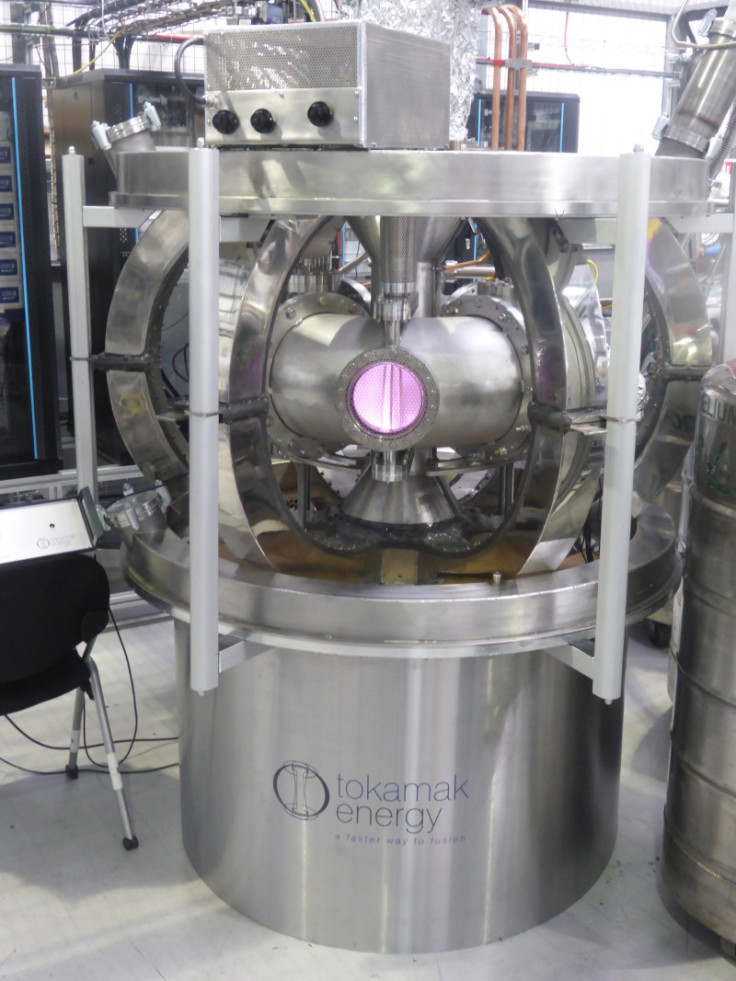This is what we need to do to get fusion energy on the grid by 2030
It will be a huge challenge, with massive investment required. But it is possible.
Excerpt from a speech by Dr David Kingham, chief executive of Tokamak Energy, to the International Energy Agency in Paris on 25 January 2017:
The world desperately needs a technology to enable deep decarbonisation by 2050. Wind and solar can help, but decarbonising transport and home and industrial heating will need something new.
Private investors, scientists and engineers are becoming serious about fusion. Major organisations, such as the Breakthrough Energy Coalition and the newly announced Breakthrough Energy Ventures, think bold new technologies like fusion can help overcome this deep decarbonisation challenge.
Experimental and theoretical research has shown 'spherical' tokamaks to be a fast route to fusion compared with more conventional tokamak devices such as JET at Culham in the UK.
By pursuing this route, fusion researchers around the world, including at Tokamak Energy, are developing new materials and technologies to help us get fusion power into the grid by 2030.
This revolves around high temperature superconducting (HTS) magnets, which allow for relatively low-power and small-size devices but high performance and potentially widespread commercial deployment. So what would happen between now and 2030 to help us achieve viable fusion power?
Firstly, we need to demonstrate further progress with this fusion reactor design. The world's first tokamak with exclusively HTS magnets – the ST25 HTS, Tokamak Energy's second reactor – demonstrated 29 hours continuous plasma during the Royal Society Summer Science Exhibition in London in 2015, a world record.

The plasma is where the fusion reaction takes place, and its stability is crucial. The next reactor in construction, the ST40, would produce plasma temperatures of 15 million degrees C – hotter than the centre of the Sun – in 2017. The ST40 is designed to achieve 100 million degrees C and get within a factor of ten of energy break-even conditions. To get even closer to break-even point, the plasma density, temperature and confinement time then need to be fine-tuned.
The next step is to build a reactor that takes this knowledge and uses it to demonstrate first electricity from fusion by 2025. This will then form the basis of a powerplant module that will deliver electricity into the grid by 2030.
This is, of course, a huge challenge. We will need massive investment, many important collaborations, an excellent supply chain, many dedicated and creative engineers and scientists – and, no doubt, some good luck and good management – in order to succeed.

Yet it is all possible. We have raised private investment of £20m ($251.8m, €23.4m) from Oxford Instruments, L&G Capital, the Institution of Mechanical Engineers and others. We have a valuable dialogue with Princeton Plasma Physics Laboratory (PPPL) on spherical tokamaks, and with the Plasma Science and Fusion Centre at MIT on HTS magnets, both leading laboratories that share our vision.
And elsewhere we can see private ventures tackling challenges previously assumed to be the realm of governments – Virgin Galactic and Space X being just two examples. Even Lord Rees of Ludlow, ex-president of the Royal Society, said in 2015 that the private sector now has greater appetite for risk in scientific projects than Western governments.
This is good news for fusion, which over previous decades has become large, political and cumbersome. Private investment is allowing smaller, agile companies to try different approaches and make new inroads into an old problem. We are treating the pursuit of fusion energy as an engineering challenge and a business, rather than a 'big science' project.
As Dan Clery, a journalist at Science Magazine, who has written extensively about fusion energy, puts it: "The energy and initiative of the private companies could give fusion a much needed shot in the arm, and for them to take the next step towards viability they will need much more money, and could use support rather than disdain. Perhaps in fusion, as in biology, diversity will promote health and vitality. And you never know, one of them might actually work."
We believe he's right, and our approach will work.
Dr David Kingham is Chief Executive of Tokamak Energy
© Copyright IBTimes 2025. All rights reserved.






















